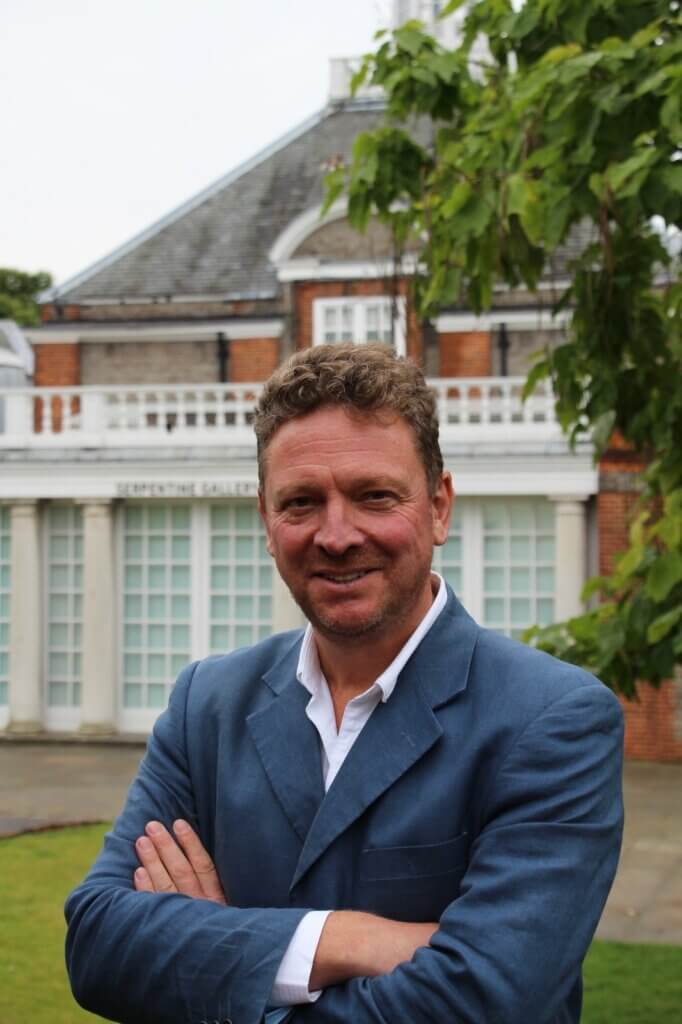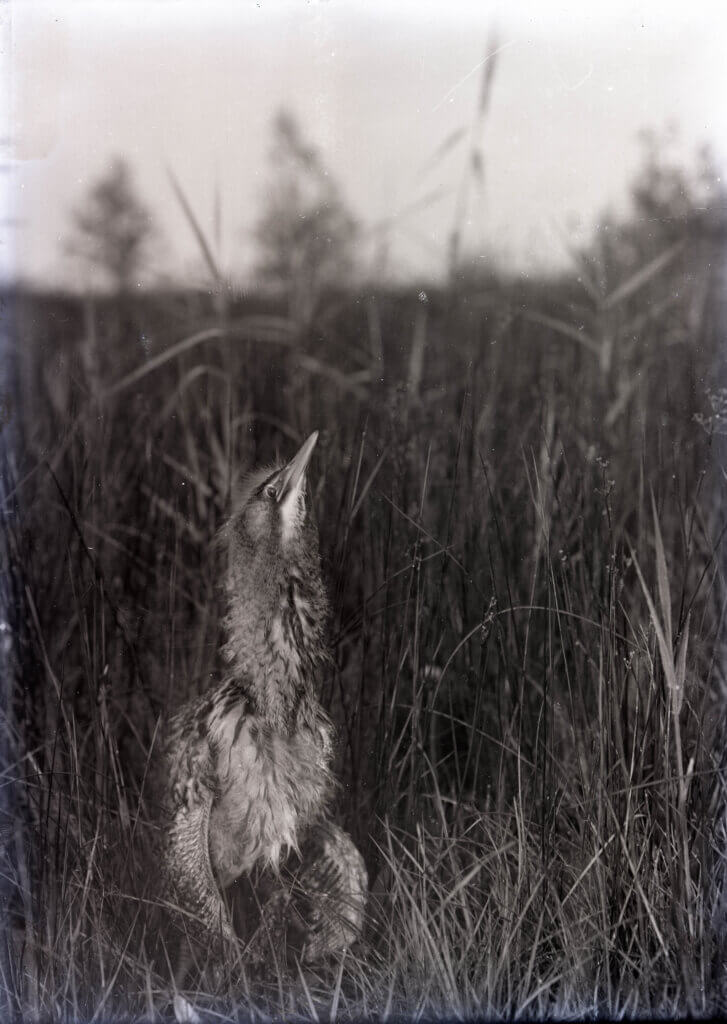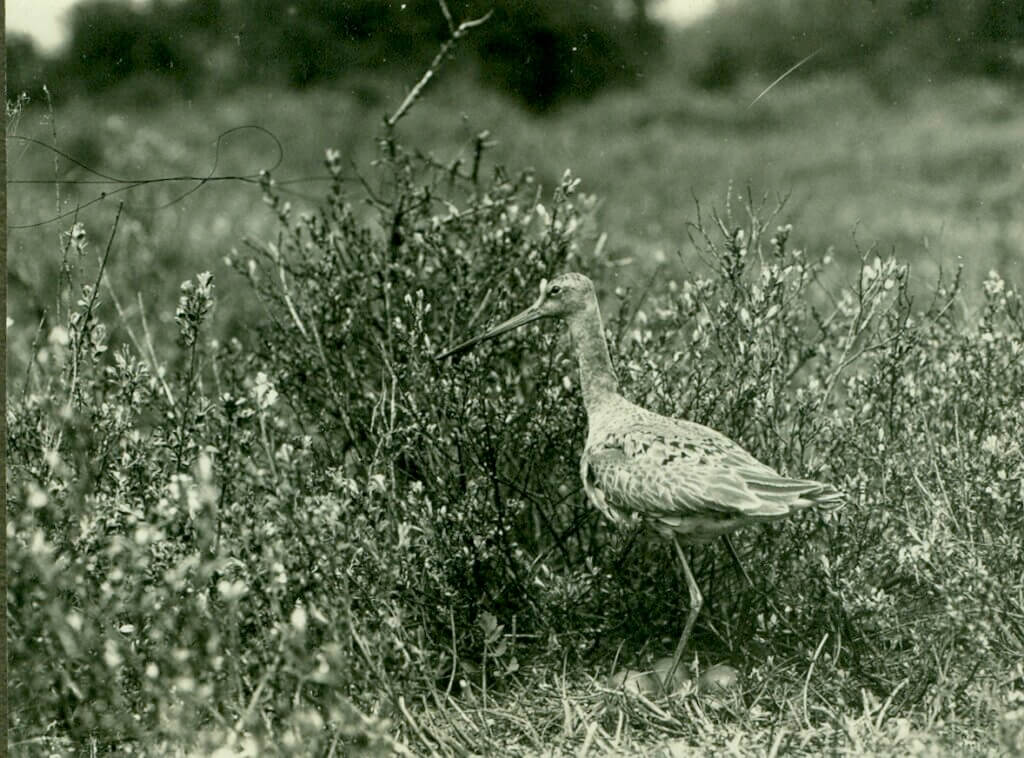
My name is James Parry and I’m a writer based in Norfolk. I focus mostly on art and heritage, but have recently become fascinated by the history of wildlife photography. With co-author Jeremy Greenwood, I’ve just published a biography on Emma Louisa Turner, one of the greatest early pioneers and yet whose life and work had become largely forgotten. She needed to be put back on the radar, so Jeremy and I set out to do just that.
EMMA TURNER: A LIFE LOOKING AT BIRDS

This photograph of Emma Turner was almost certainly taken on her island at Hickling Broad (© Bird Archive).
Like all good stories, on this one it’s useful to start almost at the end and then rewind. I’d been researching ELT (as we now affectionately call her) on and off for several years when, in early 2019, I had a call from Mike Toms at the British Trust for Ornithology in Thetford to say that some cases of old glass plates and slides had turned up in the store-room there. None of ELT’s original photographic material was known to survive, but there was a chance – however slim – that some of the plates could be hers.
Mike and I checked through hundreds of individual images, but nothing was obviously by ELT. Lastly, at the back of the cupboard was a small, crumpled cardboard box. It didn’t look hopeful, but when we pulled it out we saw, scrawled in pencil on the side, the words “Emma Turner”. Inside were 22 of her original glass slides. While it might not quite match the drama of Howard Carter opening the tomb of Tutankhamun, it was undoubtedly one of the most exciting discoveries yet in the ongoing ELT saga.
On the face of it, ELT was an unlikely candidate for ornithological and photographic fame. Born in 1867, she didn’t start wielding a camera until 1900 and knew nothing about birds when she first arrived in Norfolk – the county where she was to score some of her greatest triumphs – a year or two later. “In those days I scarcely knew one wader from another,” she later confessed.
Yet within a decade she had blasted her way to the forefront of two worlds, thanks to her outstanding fieldcraft and stunning pictures of birds at the nest. The fact that she was a woman, operating in the brutally masculine atmosphere of Edwardian natural history and image making, makes her speedy rise to prominence even more astonishing.
I first encountered ELT through a secondhand copy of her most celebrated book, Broadland Birds. Picked up for a fiver, it appealed to me as much for its Lincoln green linen cover and fancy gold lettering as anything else. But once inside, I was transfixed by the amazing black-and-white photos of iconic birds from the Norfolk Broads, including bittern, bearded tit, water rail and grasshopper warbler.
My eye was also caught by a curious picture of two figures sitting in a boat: “Alfred Nudd awaits his turn of the stereoscope”, reads the caption. Face hidden beneath a meringue of a big hat, a woman peers through some sort of optical device while her tweedy companion looks on. It’s a fabulously eccentric picture and made me want to know more about the strange, lost world it represented.

Mr Nudd was one of the local marshmen who served as ELT’s faithful helpers as she yomped her way around the Broads photographing birds. It was they who lugged her tripod and bags of heavy plates (she used a plate camera throughout, preferring to ignore the advent of film), located bird nests in suitable locations and then constructed screens and other methods of camouflage. These included burying ELT under piles of marsh vegetation for hours on end, with just her camera lens poking out, in the hope that the birds would innocently come within range.
On one occasion a snipe walked across the sedges covering her face, its probing beak pushing down into her ear. She writes beautifully about such episodes, always in the role of a bystander in the bird-filled watery landscape and never allowing herself to dominate the story. It’s a welcome change from some of today’s nature writing.
For several weeks each year, ELT was based on a houseboat called The Water-Rail, a clunky box of a thing that she designed herself and moored next to an island (now part of the Norfolk Wildlife Trust reserve and still bearing her name) in the middle of Hickling Broad. One of her biggest moments came in July 1911 when, with local gamekeeper Jim Vincent, she discovered a recently fledged bittern – proof that the species was breeding again in Britain after a long absence.

ELT’s iconic 1911 bittern photographs helped the camera replace the gun as proof of a bird’s presence (© Turner Archive/BTO).
To my mind, her evocative images of that young bird remain some of the most powerful ever taken of the species. They confirmed ELT’s reputation as a leading ornithologist and photographer – she had already stormed the male bastions of the Linnean Society, British Ornithologists’ Union and Royal Photographic Society, and was a regular and highly regarded contributor to journals such as British Birds.
The mainstream media got wind of ELT in 1924, when she became the first “watcher” over the bird colonies on Scolt Head, an island off the Norfolk coast. Attempts by the Norfolk & Norwich Naturalists’ Society to find someone to guard the breeding terns (threatened by disturbance and egg-collecting) had failed, so ELT stepped up to the mark. “I was only a stop-gap until a suitable man could be found,” she observed, perhaps wryly. In the event, she was to spend two summer seasons on Scolt, living in a primitive wooden hut and dependent on supplies brought over from the mainland.
Fleet Street loved the idea of this female Robinson Crusoe, dubbing her “the loneliest woman in England” and prompting a furious response from their unwilling subject. Making it clear that she was “never lonely and rarely alone”, she gave most reporters short shrift and once exhorted the ferryman to “drown the next” who dared to sail across to the island.

In 1920 ELT travelled to the Netherlands in search of species that were then extinct as breeding birds in Britain, such as black-tailed godwit (© Turner Archive/BTO).
Capturing the magic of birds in their natural surroundings and underpinning her lyrical prose with detailed observations of bird behaviour, ELT published several books and many papers and articles. She appears to have largely given up photography by the late 1920s, turning her attention to lecturing. Her illustrated talks drew large crowds across the country, and she used them to not only enthuse her audience about birds but also to campaign for better conservation for wildlife generally.
Sadly, tragedy was just around the corner. Her eyesight deteriorated and a bungled cataract operation rendered her almost completely blind. It was the cruellest of outcomes for such an outstanding observer of the bird world. Convinced also that her black-and-white photographs were worthless in a world rapidly turning to colour imagery, ELT must have felt as though those thousands of hours out on the marshes and in the darkroom had all been in vain. She died in Cambridge in 1940.
So it was that ELT disappeared from view. But from her diaries and other papers passed down to her great-nieces, who kindly shared them, and a whole raft of letters discovered in the amazing natural history archive of the Reverend M C H Bird (a good friend of ELT and the subject of my next book), it has been possible to compile a more detailed portrait of this remarkable woman and present her achievements to new audiences. The discovery of the slides at the BTO (and of more original material there since) has been extra icing on the cake.
Meanwhile, one type of question comes up almost every time I give a talk on ELT, even if asked discreetly afterwards rather than from the floor. Did she marry (no), were there lovers (we don’t know, but she may have had a crush or two) and was she gay (who knows, but why bother extrapolating modern obsessions over sexuality onto the very different world of the early 20th century)? The real point perhaps is this: would people be asking such questions if ELT had been a man? Almost certainly not, and that’s worth reflecting on more than any speculation about her personal life. Her successes stand on their own merits and mark her out as being someone worthy of our attention and respect today.
Emma Turner: A Life Looking at Birds is published by the Norfolk & Norwich Naturalists’ Society.

Taken by ELT in Norfolk in 1915, this picture of a ground-nesting Long-eared Owl was only rediscovered in recent years (© Bird Archive).
The caption for the Bittern photograph (ELT’s iconic 1911 bittern photographs helped the camera replace the gun as proof of a bird’s presence) is the most telling sentence.
I was asked to review this for British Birds recently. It’s not the sort of book I would normally read but it’s a fascinating and poignant story, really well told with evocative images and apposite quotes from her journals and publications. It sheds much light on birdwatching and conservation in that period as well as ELT’s life in particular. As you make clear in the book, she left a real legacy that is still relevant to nature conservation today, including her books and over 30 original notes of her observations in British Birds.
“She writes beautifully … never allowing herself to dominate the story. It’s a welcome change from some of today’s nature writing.”
Wow for ELT and wow and thank you James for rediscoverig her. Looking forward to your book
I have just had “Broadland Birds” off the shelf for a quick look before dinner, i am sure it would stand a reprint. Some of those old glass plates have an atmosphere , like Cine film, that transports you back to the moment.
Jim Vincent went on to assist other photographers, most notably Eric Hosking in his work at Hickling.
On his deathbed, Vincent’s last words to Hosking were ” look after the Bearded’s”, it didn’t matter about the Pheasants !, they don’t make ’em like that anymore.
Maybe Mr Parry would be interested in providing a home for the glass plates you wrote about recently Mark ?.
Another good read to go with this is A Season Of Birds, A Norfolk Diary 1911. Jim Vincents diary extracts from that time and of working with Emma, the bitterns and montagu’s harriers first breeding there. Jim was a great conservationist and shooter(even awarded by the RSPB. Can you imagine them doing that to a keeper today?).He was sort out and supported for his fieldcraft, knowledge, insight and forward thinking vision by both lords and the King from the young age of 16. Hickling Broad would not be what it is to day if it wasn’t for Jim or those that supported and helped him (Nudd was a keeper not a marshman). Hickling still a special place but sadly will never be maintained or managed to be as good as it once was! I have great memories of mooring up on there and candle dyke. Fishing both day and night for huge bream and big roach. Enjoying the amazing sunsets, sun rises, wildlife and of cause the swallow tails. It was easy to imagine a time now lost . .
It’s a shame there is now so much division between birders, conservation folk and us that also shoot. So much blinkered negativity. Tick box “conservation”. Driven by money, grants, politics, competition, agenda and big ego’s. Those men (shooters) and woman had real passion and field craft! They were the true pioneering visionaries and conservationists!